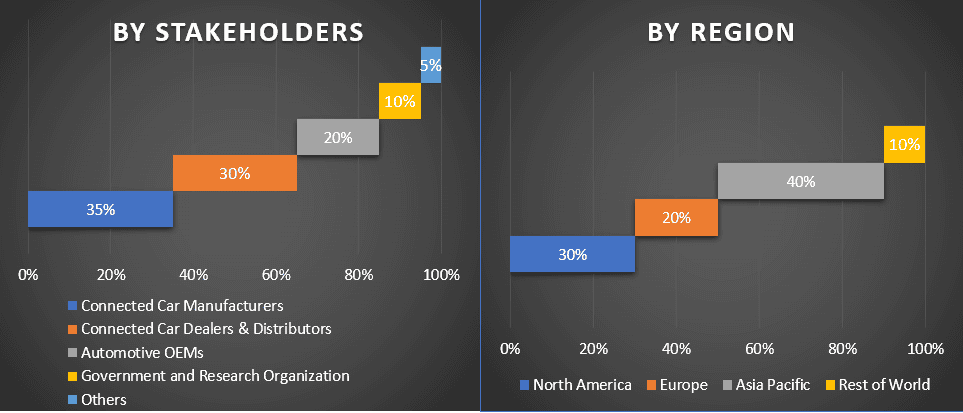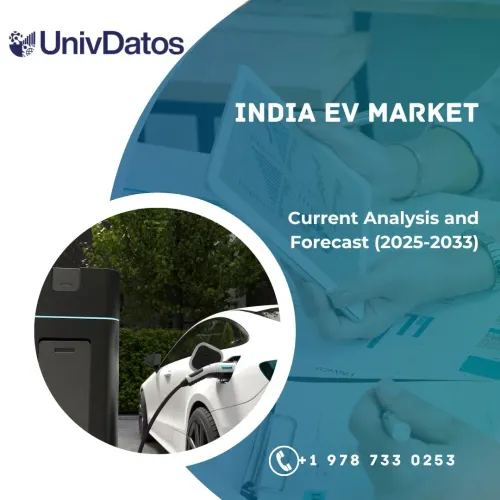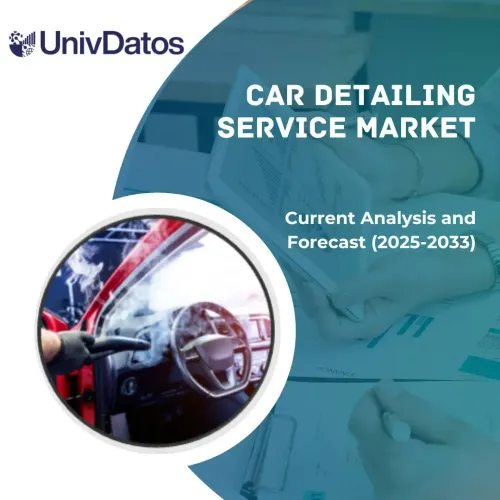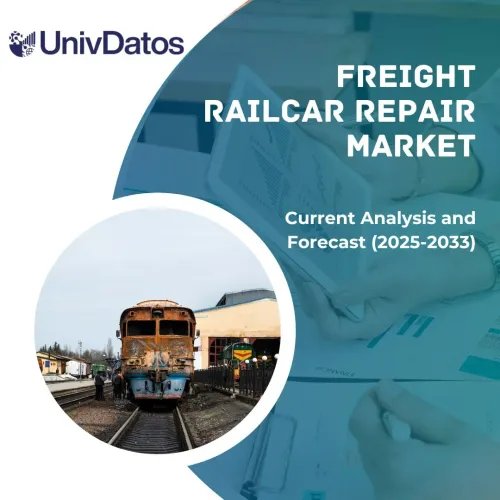- Home
- About Us
- Industry
- Services
- Reading
- Contact Us
Connected Car Market: Current Analysis and Forecast (2021-2027)
Emphasis on Technology (3G, 4G, and 5G); Connectivity Solution (Integrated, Embedded, and Tethered); Service (Driver Assistance, Safety, Entertainment, Vehicle Management, and Mobility Management); Sales Channel (OEMs and Aftermarket); Region and Country

Global Connected Car Market is anticipated to display a CAGR of around ~18% over the forecast period (2021-2027). Automobile manufacturers have made integrating connection solutions into their vehicles a key focus. Many networking options are included in current cars, and they all require internet access to function properly. Embedded, integrated, and tethered connection options can all be used to give connectivity in a car. One of these connectivity options is utilized to provide Internet access to both the driver and the passengers in the car. With the use of a smartphone, modem, or connectivity device, an in-car hotspot can be constructed to enable Internet access to any devices within the vehicle. As a result, the market for connected cars is growing due to an increase in the popularity of connectivity solutions. Various governments in various nations are working on legislating various Advanced Driver-Assistance Systems (ADAS) and safety features in order to reduce the frequency of car accidents and thereby prevent fatalities and injuries. As a result, the Connected Car Market is primarily driven by the development in ADAS technology in automobiles. In nations such as Europe and the United States, ADAS technologies such as Anti-lock Braking System (ABS), Electronic Stability Control (ESC), and Autonomous Emergency Braking (AEB) have been mandated in automobiles. The overall demand for linked cars has surged as a result of the government’s mandated restrictions. Other significant drivers driving the growth of the connected automobile market are increased demand for connectivity solutions, increased reliance on technology, and an increase in the tech-savvy population.
Insights Presented in the Report
“Amongst Technology, 5G segment to be most lucrative”
Based on technology, the market is segmented into 3G, 4G, and 5G. The 5G segment is projected to be the most lucrative segment, as several telecommunications firms are working on improved 5G networks to improve connectivity between connected automobiles and other devices. According to the 5G Automotive Association, a seamless 5G network can save more than 60% of traffic accidents. For example, South Korea and the EU have invested more than USD 1.5 billion to construct a 5G network for local initiatives. This should help to reduce the rising number of traffic accidents. Over the projected period, the satellite segment is expected to increase at the fastest rate. Only in regions where mobile towers are prevalent, such as urban areas, do cellular and Wi-Fi networks support connected automobiles. The network is entirely cut off once the vehicle departs the mobile tower’s boundary, which could cause major problems for the occupants of the connected vehicles. To address this issue, a number of car OEMs, satellite operators, and mobile operators are working to construct hybrid satellite-terrestrial networks that would provide continuous connectivity. As a result, the connected automobile industry is likely to be propelled by rising demand for satellite and 5G networks.
“Amongst connectivity solution, Embedded segment dominated the market in 2020.”
Based on connectivity solution, the market is segmented into Integrated, Embedded, and Tethered. The embedded segment is projected to be the largest segment during the forecasted period, as various disruptive causes, such as government regulations, cost optimization of service plans, and the expansion of cloud-based services, can be credited to the long-term growth of embedded connected solutions. Automakers are expected to use embedded solutions to meet regulatory requirements and as a foundation for providing vehicle-centric telematics services, according to the GSMA. However, widespread acceptance will be contingent on overcoming the current limits of embedded solutions. For example, in the European Union, EOBD (the European version of OBD) is required for all gasoline automobiles. In actuality, practically all automobiles sold in the United States, regardless of where they are sold, are designed and certified to fulfill California’s OBD II criteria
“Amongst Service, Driver Assistance segment dominated the market in 2020”
Based on the service, the market is segmented into Driver Assistance, Safety, Entertainment, Vehicle Management, and Mobility Management. The Driver Assistance segment is expected to dominate the market during the forecasted period, because adaptive cruise control, lane keep assisting, 360-degree camera, park assist, and other technologically advanced functions that increase the vehicle’s safety are included in the advanced driver assistance system. Various countries throughout the world have established strict safety regulations on automakers. The Indian automobile industry, for example, adopted the BS-VI norm in April 2020, which incorporates reverse parking sensors in all car categories
“Amongst Sales Channel, OEMs segment dominated the market in 2020”
Based on the sales channel, the market is segmented into OEMs and Aftermarket. The OEMs segment is expected to dominate the market during the forecasted period because increasing technological advancements such as uninterruptible connectivity, cybersecurity, and the development of driverless vehicles with highly secure software are expected to help OEMs maintain their dominance during the forecast period. Furthermore, expanding cooperation with important players to develop high-quality and cost-effective components is another factor driving the OEM segment’s growth.
“Asia Pacific represents the largest market.”
Because of the growing use of high-end and cost-effective connectivity solutions, the Asia Pacific region is likely to dominate the connected car industry. Consumer demand for in-vehicle integrated connectivity technologies, as well as the growing trend toward connected automobiles, have fueled the expansion of connected vehicles in this region. One of the important factors driving demand for advanced connected car features is the introduction of autonomous vehicle technology in the Asia Pacific connected car industry. Japan has one of the highest connected car adoption rates in the world, with China anticipated rising rapidly in the next years. In addition, the connected car services market will be driven in the coming years by the increased demand for aftermarket services as a result of the renewal of connected car service subscriptions. Some of the major players operating in the market include Daimler AG, Visteon Corporation, Robert Bosch GmbH, Airbiquity Inc., Ford Motor Company, Continental AG, AT&T Inc., Harman International Industries, Audi AG, Intellias Ltd
Reasons to buy this report:
- The study includes market sizing and forecasting analysis validated by authenticated key industry experts
- The report presents a quick review of overall industry performance at one glance
- The report covers an in-depth analysis of prominent industry peers with a primary focus on key business financials, product portfolio, expansion strategies, and recent developments
- Detailed examination of drivers, restraints, key trends, and opportunities prevailing in the industry
- The study comprehensively covers the market across different segments
- Deep dive regional & country-level analysis of the industry
Customization Options:
The Global Connected Car Market can further be customized as per the requirement or any other market segment. Besides this, UMI understands that you may have your own business needs, hence feel free to connect with us to get a report that completely suits your requirements.
Table of Content
Research Methodology for Connected Car Market (2020-2027)
The connected car provides connectivity on wheels by combining comfort, convenience, performance, safety, and security with cutting-edge network technology. This allows the driver to connect to web channels, making real-time conversation possible. The rise in customer demand for connectivity solutions, the increased requirement for constant connectivity, more reliance on technology, and an increase in the tech-savvy population are all contributing to the worldwide connected car market’s growth. Car manufacturers and service providers have created numerous connectivity solutions over time, such as the machine-to-machine (M2M) communication platform. This M2M technology in a car allows two connected cars to communicate with each other. The car is fitted with a number of sensors and computers that provide the driver with accurate and real-time information. Technological developments, increased vehicle manufacturing, and increased demand for luxury and comfort in automobiles are all projected to contribute to the market’s growth. Furthermore, the connected car market’s growth is expected to be hampered by factors such as improved worldwide vehicle regulations and the high maintenance costs of modern suspension systems. However, an increase in demand for lightweight suspension systems and the development of innovative suspension systems are projected to boost the market growth. As the number of vehicle thefts rises, automobile purchasers are becoming more interested in surveillance systems that can track their vehicles and transmit real-time position updates. Once the phone is connected to the vehicle’s entertainment system, it keeps track of the passenger’s trip history, including where the passenger last traveled, how many halts were made in between, and so on, which might make travel dangerous. Car owners have begun to install gadgets such as TravelEyes2, ProScout, and LoJack in their vehicles to avoid data theft. These systems transmit an alert to the owners’ phones, allowing them to lock the car with a single touch.
Seek More Details About Research Methodology
Analysis of Historical Market Size
Step 1: In-Depth Study of Secondary Sources:
A detailed secondary study was conducted to obtain the historical market size of the Connected Car through company internal sources such as annual reports & financial statements, performance presentations, press releases, etc., and external sources including journals, news & articles, government publications, competitor publications, sector reports, third-party database, and other credible publications.
Step 2: Market Segmentation:
After obtaining the historical market size of the Connected Car, we conducted a detailed secondary analysis to gather historical market insights and share for different segments & sub-segments for major regions. Major segments included in the report are technology, connectivity solution, service, and sales channel. Further regional & country-level analyses were conducted to evaluate the overall adoption of Connected Car in the global context.
Step 3: Factor Analysis:
After acquiring the historical market size of different segments and sub-segments, we conducted a detailed factor analysis to estimate the current market size. Further, we conducted factor analysis using dependent and independent variables such as growing government incentives and demand for eco-friendly transportation, etc. Historical trends and their year-on-year impact on the market size and share were analyzed. Demand and the supply-side scenario were also thoroughly studied.
Current Market Size Estimate & Forecast
Current Market Sizing: Based on actionable insights from the above 3 steps, we arrived at the current market size, key players in the market, and market shares of the segments and company. All the required percentage split and market breakdowns were determined using the above-mentioned secondary approach and were verified through primary interviews.
Estimation & Forecasting: For market estimation and forecast, weights were assigned to different factors including drivers & trends, restraints, and opportunities available for the stakeholders. After analyzing these factors, relevant forecasting techniques i.e., the bottom-up approach were applied to arrive at the market forecast to 2027 for different segments and subsegments across the major regions globally. The research methodology adopted to estimate the market size encompasses:
- The industry’s market size, in terms of value (US$) and the adoption rate of Connected Car across the major markets
- All percentage shares, splits, and breakdowns of market segments and sub-segments
- Key players in Connected Car in terms of products offered. Also, the growth strategies adopted by these players to compete in the fast-growing market.
Market Size and Share Validation
Primary Research: In-depth interviews were conducted with the Key Opinion Leaders (KOLs) including Top Level Executives (CXO/VPs, Sales Head, Marketing Head, Operational Head, Regional Head, Country Head, etc.) across major countries. Primary research findings were then summarized, and statistical analysis was performed to prove the stated hypothesis. Inputs from primary research were consolidated with secondary findings, hence turning information into actionable insights.
Split of Primary Participants in Different Regions

Market Engineering
The data triangulation technique was employed to complete the overall market estimation and to arrive at precise statistical numbers for each segment and sub-segment of the Connected Car. Data was split into several segments & sub-segments post studying various parameters and trends in the areas of application, vehicle type, component, and region.
The main objective of the Connected Car Study
The current & future market trends for Connected Car were pinpointed in the study. Investors can gain strategic insights to base their discretion for investments on the qualitative and quantitative analysis performed in the study. Current and future market trends would determine the overall attractiveness of the market at a regional & country level, providing a platform for the industrial participant to exploit the untapped market to benefit as a first-mover advantage. Other quantitative goals of the studies include:
- Analyze the current and forecast market size of Connected Car in terms of value (US$). Also, analyze the current and forecast market size of different segments and sub-segments
- Segments in the study technology, connectivity solution, service, and sales channel
- Defined analysis of the regulatory framework for the Global Connected Car industry
- Analyze the value chain involved with the presence of various intermediaries, along with analyzing customer and competitor behaviors of the industry
- Analyze the current and forecast market size of the Connected Car for the major regions & countries
- Major regions studied in the report include North America (US, Canada, Rest of North America), Europe (Germany, United Kingdom, France, Italy, and Rest of Europe), Asia Pacific (China, Japan, India, South Korea, Rest of Asia-Pacific), and Rest of World
- Company profiles of the Connected Car players and the growth strategies adopted by them to sustain in the fast-growing market
- Deep dive regional & country-level analysis of the industry
Related Reports
Customers who bought this item also bought










